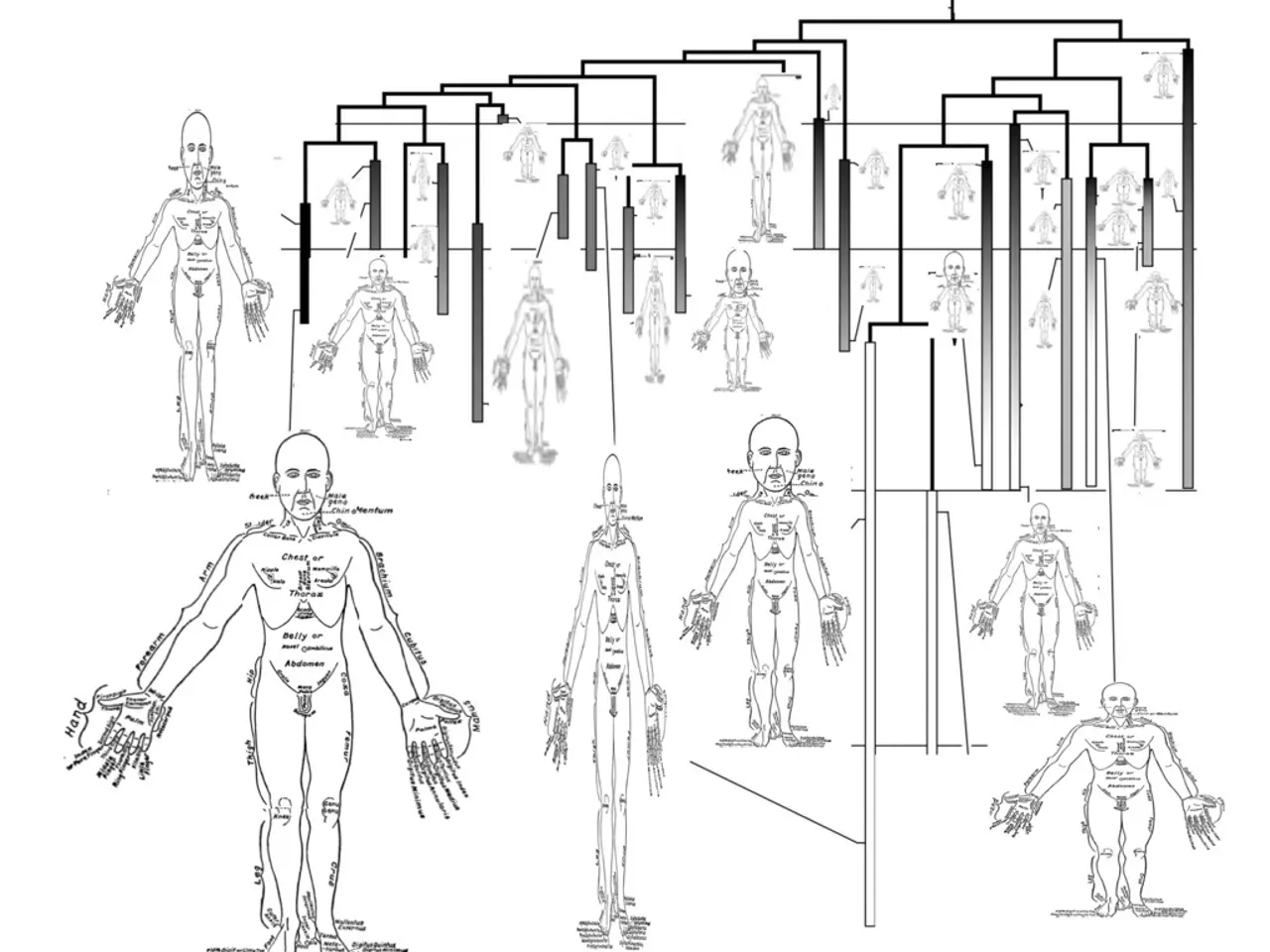Revealing Internal Structures Through Cross-Sectional Perspectives
In the intricate world beneath our fingertips, the skin, much like a vibrant city, is a complex network of cells, each playing a crucial role in maintaining health, beauty, and vitality. A closer look, provided by cross-sectional views, reveals the skin's hidden depths and the intricate balance that keeps it functioning optimally.
The skin, our body's largest organ, serves as a protective barrier, preventing harmful substances from entering the body. The outermost layer, the epidermis, is composed of keratinocytes and forms a watertight barrier. Keratinocytes produce keratin, a tough protein that forms this protective shield.
Beneath the epidermis lies the dermis, a layer packed with collagen and elastin, providing the skin with strength and elasticity. Fibroblasts in the dermis are responsible for producing these essential proteins. The dermis also houses melanocytes, cells that produce melanin, the pigment that determines skin color and protects from UV radiation.
The hypodermis, the deepest layer of the skin, is filled with adipocytes. These cells act as a form of insulation, keeping the body warm, and serve as a reserve energy source for the body. Sebaceous glands, located within the hypodermis, secrete an oily substance called sebum, keeping the skin and hair hydrated.
Capillaries form an intricate network throughout the skin, acting as exchange hubs. They allow essential nutrients to pass from the blood into the skin tissues and remove waste products. A complex network of blood vessels, including arteries, veins, and capillaries, facilitates the continuous flow of oxygen and waste removal.
Cross-sectional views are crucial for analyzing the anatomy of the skin. They reveal the detailed internal structure, layers, and thickness of the skin, which are not visible from the surface. This view helps differentiate and study the epidermis, dermis, and subcutaneous layers, allowing for precise assessment of skin features such as wrinkles, pigmentation, pore size, elasticity, hydration, and barrier function.
In more detail, cross-sectional imaging, especially when enhanced by technologies like AI-powered 3D skin analyzers using multi-spectrum light waves, provides a layered map of the skin's composition and health. This facilitates diagnosing conditions like sun damage, melasma, collagen loss, and aging signs, which depend on changes beneath the surface layer.
Moreover, cross-sectional views are used in advanced imaging methods such as ultrasound or specialized scanning in research and clinical settings to assess normal and pathological states of skin and soft tissues. These views enable visualization that guides targeted treatments and monitors skin condition progression over time.
In summary, the cross-sectional view: - Shows the internal layers and thickness of the skin. - Detects subsurface abnormalities invisible to the naked eye. - Assists in diagnosing skin conditions and planning personalized treatments. - Enables monitoring changes over time for aging or damage.
The skin, with its complex network of cells and layers, is a testament to the intricate design of our bodies. Understanding its structure and function helps us appreciate its role in maintaining our health and well-being.
The intricate balance of the skin, serving as a protective barrier for womens' health, extends to health-and-wellness by providing a watertight barrier against harmful substances. Moreover, skin-care advancements, such as AI-powered 3D skin analyzers, utilize cross-sectional views to diagnose conditions like sun damage and aging signs, ensuring women maintain the vibrancy and vitality of their skin.




